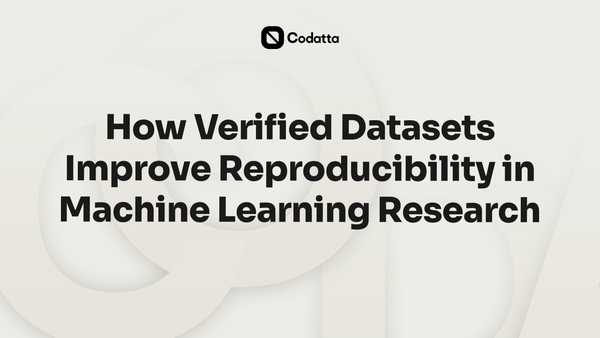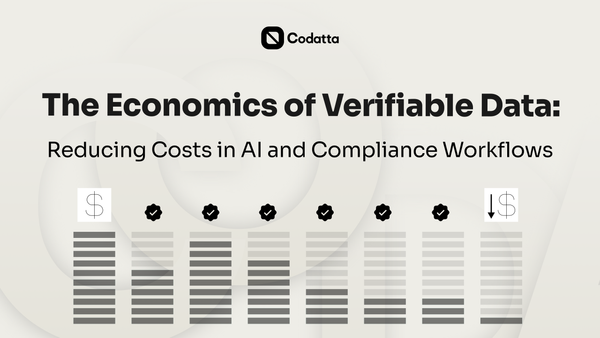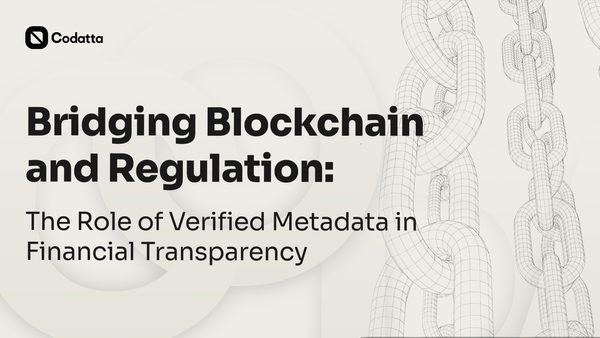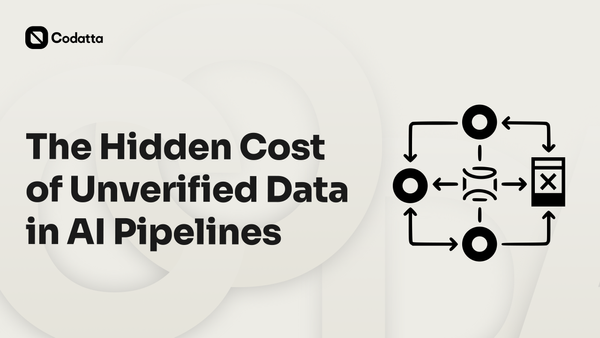Why Data Provenance Is Becoming the New Standard for Digital Compliance
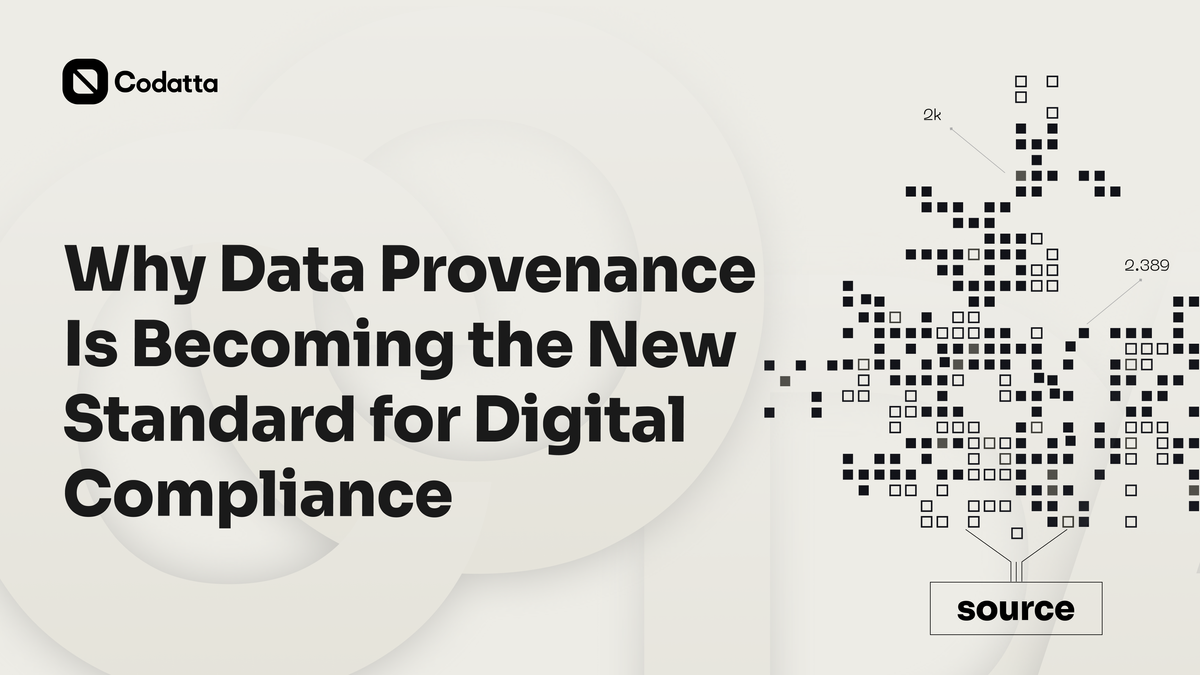
Modern compliance now depends on transparent and traceable data flows supported by strong data governance and data management practices. Global frameworks such as the OECD Data Governance Principles, FATF guidelines, the EU AI Act, and ISO/IEC 5259 all highlight the importance of data provenance and data lineage in ensuring data integrity, accountability, and regulatory compliance.
Accurate provenance records help institutions verify data quality and responsible data use, proving that information meets the standards required in finance, research, and automation.
Provenance is no longer optional... it defines the credibility of digital records and automated systems.
Read on to see how verified provenance is shaping the future of compliance and trustworthy data ecosystems.
The Compliance Gap: Unverified and Opaque Data
Many organizations still manage data assets spread across disconnected systems without consistent data provenance standards or verifiable provenance information. This lack of visibility makes it difficult to track the origin of data, confirm data integrity, and prove compliance with current data governance frameworks.
When provenance metadata is missing or unreliable, institutions face serious data quality issues. Inconsistent data sources, unclear data lineage, and poor data handling lead to errors that weaken auditability. Regulators and auditors cannot confirm the authenticity of data, leaving enterprises exposed to financial penalties, reputational harm, and operational inefficiency.
The OECD (2025) highlights that traceable data flows and accurate data provenance records are now essential for trust and accountability in both public and private digital ecosystems. Similarly, Deloitte’s Digital Trust Report stresses that provenance enhances transparency and reduces risk across data and AI applications, emphasizing the importance of robust data management systems that can monitor and ensure data integrity at scale.
As data volumes grow and new compliance standards emerge, unverified or opaque data flows are becoming one of the biggest obstacles to building responsible data ecosystems. Strengthening provenance tracking is now a key priority for maintaining transparency and regulatory trust in complex enterprise data environments.
What Data Provenance Really Means
Data provenance means verified information that explains the origin, validation, and transformation of each dataset. It gives a complete view of how data came into existence, how it was checked, and how it has been handled through its lifecycle. Provenance systems help organizations understand the full history of data and confirm that it meets standards for accuracy and integrity.
Each record includes key details such as who created it, when it was verified, and under what governance rules it operates. This context turns ordinary data into verifiable evidence that supports compliance reviews and digital assurance. It ensures that the use of data can be trusted across applications where precision and accountability matter.
In regulated industries like finance, healthcare, and public administration, provenance has become a foundation for responsible data privacy and transparent operations. New data provenance standards and frameworks are now guiding how institutions manage the use of data and maintain accountability across digital ecosystems. These systems create a clear chain of trust that supports better decisions, safer data handling, and consistent alignment with regulatory expectations.
How Verified Provenance Strengthens Digital Integrity
Verified provenance gives organizations the ability to track data across its entire lifecycle and confirm its authenticity at every step. It ensures that every dataset used in digital operations can be traced, reviewed, and verified, creating a record of trust that strengthens governance and transparency.
Reliable data with verified provenance supports audit-ready reporting. Institutions can trace how information was created, updated, and applied, which simplifies compliance checks and internal reviews. This level of traceability reduces the risk of fraud, data manipulation, and hidden inconsistencies that often appear in unverified data sets.
Provenance systems also improve accountability in automated workflows. In financial audits, supply chain tracking, and AI compliance frameworks, traceable data lineage helps confirm that decisions were based on verified inputs. For example, financial regulators and global initiatives such as the OECD’s Data Governance Framework and ISO/IEC 5259 highlight the need for clear provenance metadata to ensure reliable reporting and protect data integrity across industries.
Cross-industry data provenance standards make it easier to share and verify records without losing context or accuracy. Organizations that track data through verified provenance gain higher trustworthiness in digital operations, reduce exposure to data issues, and build stronger foundations for compliance and innovation.
Codatta’s Role in Provenance Infrastructure
Codatta functions as a decentralized data protocol built to validate metadata and track provenance across digital systems. It focuses on verifying the accuracy and origin of data so that organizations can maintain accountability and trust in complex information environments.
Codatta does not regulate or audit institutions. Instead, it provides verified, structured datasets that regulators, enterprises, and digital platforms can use to strengthen compliance assurance. Each record carries validation details that help data analysts, compliance officers, and technical teams confirm data integrity without relying on opaque intermediaries.
The protocol supports interoperability across systems that handle sensitive data, patient data, and large-scale data processing. Its design allows verified metadata to move between tools and networks without exposing private or identifying information. This makes Codatta useful in settings where privacy and data reliability must coexist — from regulated industries to advanced analytics environments.
Through this structure, Codatta enables stronger data governance and dependable provenance standards that improve trust and transparency across the digital landscape.
Conclusion: The Future of Compliance Is Verifiable
Verified provenance is becoming the foundation of modern digital compliance. It ensures that every piece of data used in automation, reporting, or analysis can be traced to its source and validated with confidence. This transparency strengthens accountability, reduces operational risk, and builds lasting trust across data-driven industries.
As more organizations rely on automated systems for decision-making and regulatory reporting, verifiable provenance will separate credible platforms from those built on assumptions. It turns compliance into a measurable process rooted in data integrity, not paperwork.
Codatta supports this evolution through its decentralized data infrastructure. It provides the tools to verify, structure, and preserve data authenticity across digital ecosystems, helping enterprises, researchers, and regulators maintain clarity and accountability as automation expands.
The future of compliance belongs to systems that can prove their data, and Codatta is helping build that foundation.

